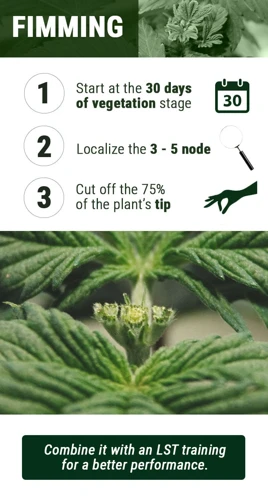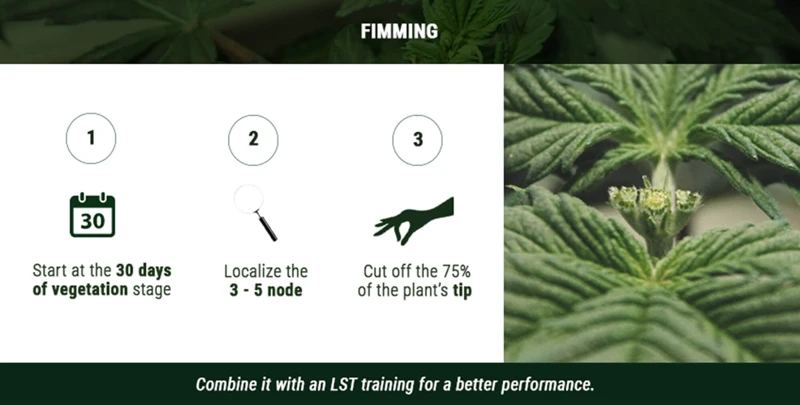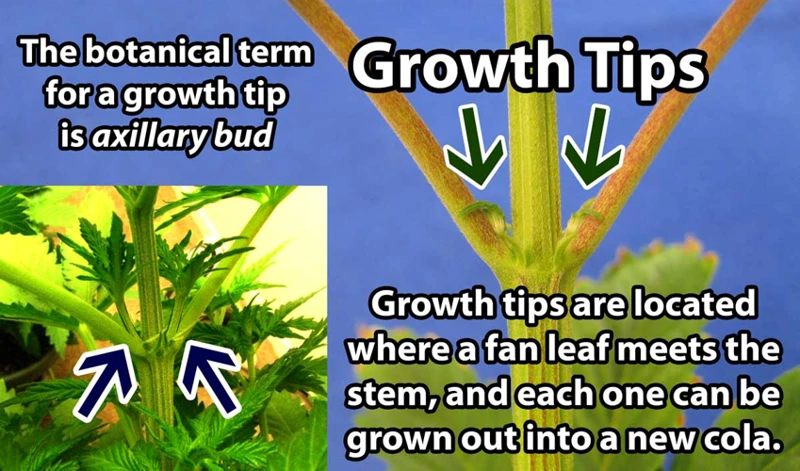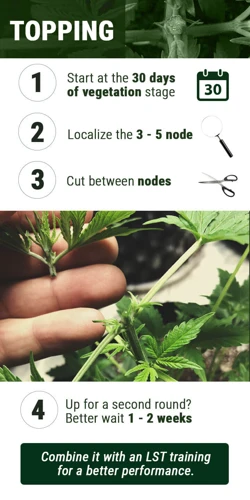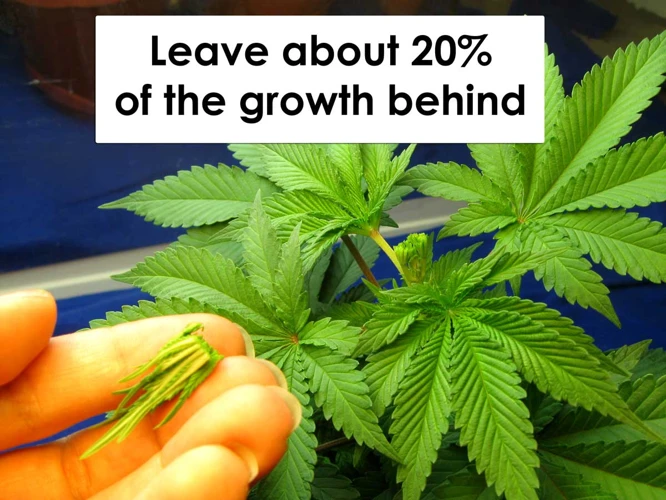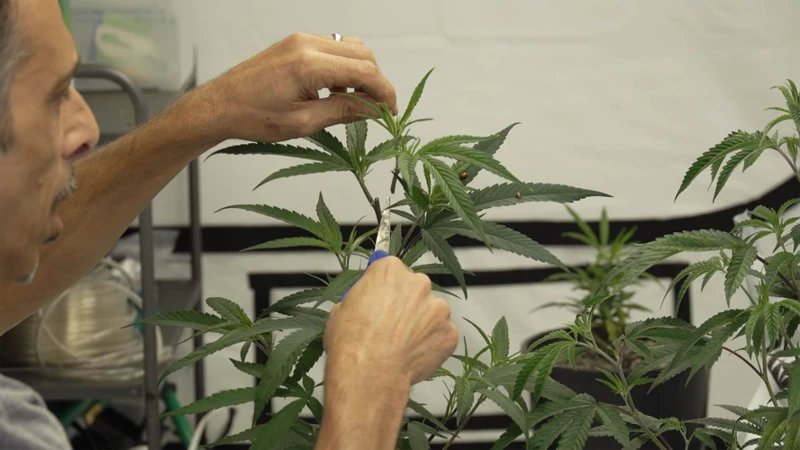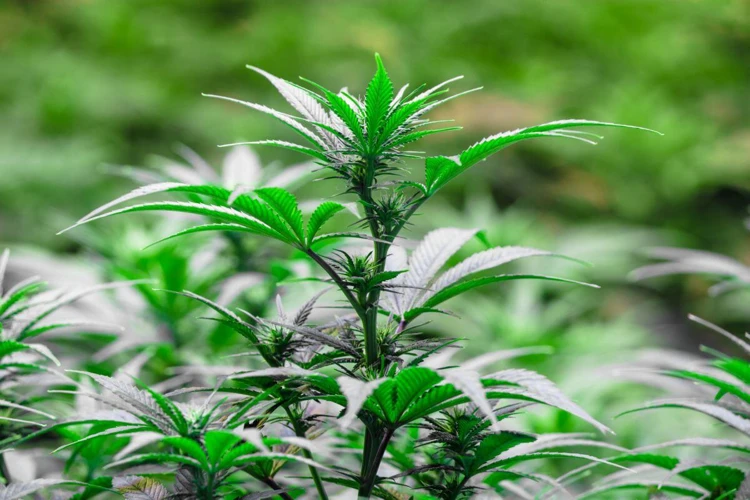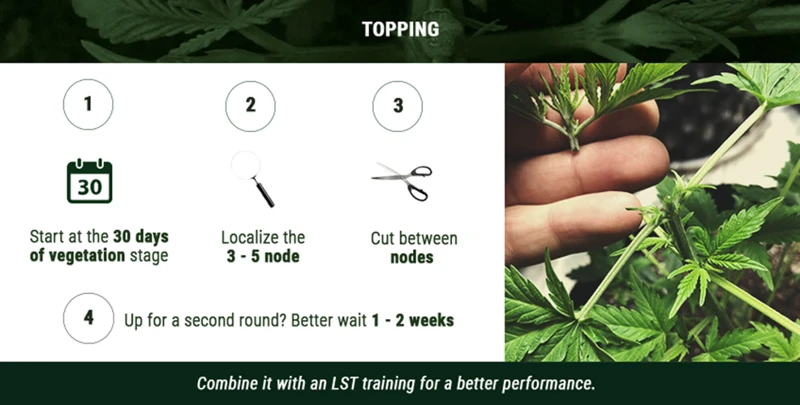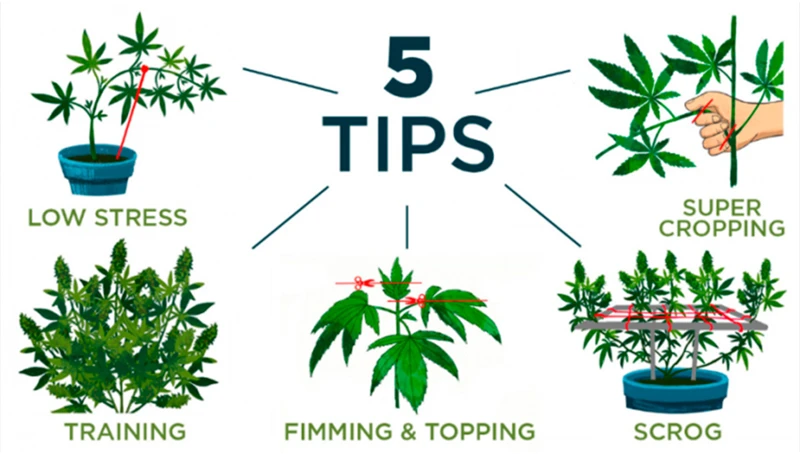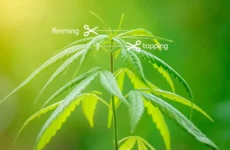
Fimming vs Topping: Which Technique Is Better for Your Cannabis Plants?
When cultivating cannabis plants, there are various techniques that growers often use to enhance yield and improve plant growth. Two of the most popular techniques are fimming and topping. However, it can be perplexing for beginner growers to determine which technique is better for their plants. Fimming and topping both involve cutting off the growing tip of the plant, but the differences between the two are often subtle and nuanced. In this article, we’ll break down the process, benefits, and downsides of both fimming and topping, as well as consider factors to consider before choosing one technique over the other. We’ll also provide tips for growers on when and how to perform these techniques and best practices for caring for your plants after the cut.
What is topping?
Contents
Have you ever wondered how cannabis cultivators achieve denser and bushier plants? One of the widely used techniques to improve the growth of cannabis plants is topping. This technique involves cutting off the upper part of the main stem, which encourages the plant to grow more side shoots. By practicing topping, cultivators can control the growth pattern of the plant, making it easier to manage the canopy and maximize yield. But, how is it done, and what benefits does it offer over other methods? Let’s dive deeper into the world of topping and find out.
How to do topping?
Topping is a technique used by cannabis growers to control the height of cannabis plants, resulting in bushier and bushier plants. Here are the steps to follow when topping your cannabis plants:
- Wait until your cannabis plant has grown at least four to six sets of leaves from the main stem before topping. This usually takes about four to six weeks from the time the seed or clone is transplanted into the final container.
- Identify the plant’s main stem and locate the node where the new growth is starting to develop.
- With a sterilized pair of pruning or trimming scissors, carefully cut off the top of the main stem just above the node.
- Within a few days, you should start seeing new growth developing where you made the cut.
- Once the plant has fully recovered and the new growth has grown a few inches, you can repeat the process by topping again. You can repeat topping as many times as needed to maintain the desired height and shape of the plant.
It is important to note that topping should only be done to healthy plants and with sterilized equipment to prevent the spread of diseases. It is also recommended to top your plants during the vegetative growth stage before transitioning to the flowering stage.
Why topping is beneficial?
Topping is a beneficial technique that can be used to improve the overall health and yield of your cannabis plants. Here are some of the ways topping can benefit your plants:
- Increased yield: When you top your cannabis plant, it creates two main stems at the point where it was topped. This effectively doubles the number of colas, or bud sites, on the plant. More colas means more potential buds, which can lead to a higher yield at harvest time.
- Better light distribution: By topping your plant, you encourage it to grow into a bushier shape. This makes it easier for light to reach all parts of the plant evenly. With more access to light, your plant can photosynthesize more efficiently, which can lead to healthier growth and stronger buds.
- Improved airflow: Topping can help to improve air circulation around your plant. When a plant is allowed to grow tall and spindly, the lower branches may not get enough air or light. This can create a humid environment that is ideal for mold and mildew to grow. By topping your plant, you encourage it to grow into a more compact shape with more evenly spaced branches. This can help to prevent mold and mildew from taking hold.
- Controlled height: Topping can help you to control the height of your cannabis plant. This is especially useful if you are growing indoors and have limited space. By topping your plant early on, you can encourage it to grow into a bushy shape rather than a tall, spindly one. This can help you to maximize your space and prevent your plant from getting too tall to manage.
Topping is a beneficial technique that can help you to improve the health and yield of your cannabis plants. However, it is important to remember that topping can be stressful for your plants, and it should be done carefully and at the right time. Be sure to do your research and practice proper technique to ensure the best results.
What is fimming?
If you’re new to cannabis cultivation, you might have stumbled across the term “fimming” and wondered what it meant. Fimming is a plant training technique that involves removing a portion of the plant’s new growth to encourage lateral branch growth. This method is similar to topping, but with a slight variation in the way the cut is made. Fimming could be a useful technique for promoting bushy growth, increasing yields, and controlling the height of your plants. Here’s what you need to know to get started with fimming.
How to do fimming?
Fimming is a cannabis plant training technique that is similar to topping. But unlike topping, which involves completely removing the top growth of the plant, fimming removes only a portion of the new growth at the top of the plant. Here’s how to do it:
- Wait until your plant has at least 3 to 4 nodes. Nodes are where the leaves and branches grow out of the stem. This will give you enough space to make the FIM cut without damaging the plant.
- Identify the new growth at the tip of the plant. This is where you’re going to make the FIM cut. Look for the new growth that has two tiny leaves sprouting out of it.
- Use a clean and sharp pair of scissors. Sterilize the blades with rubbing alcohol or hydrogen peroxide to prevent any infections or diseases from entering the plant.
- Make the FIM cut. Using the scissors, clip off about 80% of the new growth at the tip of the plant. It’s important to leave some new growth so that the plant can continue to grow upwards. The point of the FIM cut is to encourage the plant to bush out and produce more colas.
- Observe the plant. Wait for a few days and observe how the plant reacts to the FIM cut. You should see new growth sprouting out from the sides of the plant.
- Repeat the process. You can do FIM multiple times during the vegetative stage of growth. But be cautious and wait for the plant to recover from the previous FIM cut before doing another one.
Remember that fimming can be stressful for the plant, so it’s important to be gentle and patient. Make sure to provide your plant with enough nutrients, water, and light to help it recover from the FIM cut.
Why fimming is beneficial?
Fimming or “FIM” stands for “F**k I Missed”. It is a technique that involves taking off the topmost growth of a cannabis plant. Here are some of the benefits of Fimming:
- Increased Yield: Fimming can lead to an increase in the yield of your cannabis plants by allowing more branches to grow. When you FIM a plant, you are creating a bushier plant with more colas. Colas are the parts of the plant where the buds form, so the more of them you have, the higher your yield will be.
- Less Stress: Fimming is less stressful on the plant as compared to topping. When you top a plant, you are removing the entire top of the plant, which can be quite stressful for it. Fimming only takes off a portion of the top growth, leaving the rest of the plant to grow as it would have naturally. This means that the plant can recover much faster.
- Shorter Vegetative Stage: Fimming can help shorten the vegetative stage of the plant. This is because the plant will focus its energy on growing more branches instead of just growing taller. A shorter vegetative stage means that you can move your plants to the flowering stage sooner, which can lead to faster harvests.
- More Control: Fimming can provide you with more control over the shape and size of your plant. When you FIM a plant, you are basically telling it how wide you want it to grow. Instead of one main cola growing tall and narrow, Fimming will allow the plant to develop multiple colas, making the plant shorter and bushier. This can help maximize the use of space in your grow tent or room.
Fimming is a great technique for increasing your yield, controlling the shape and size of your plant, and shortening the vegetative stage. It can be less stressful on the plant and provide you with more control over the outcome of your grow.
Comparison between Fimming and Topping
As a cannabis grower, deciding on the best technique to use can be perplexing. One of the most common techniques used to increase yields is topping and fimming. Although both techniques involve removing parts of the plant, there are differences between fimming and topping. Understanding the differences is crucial to help you choose the best technique for your plants. In this section, we will highlight the differences between fimming and topping and help you determine when to use each technique.
Difference between Fimming and Topping
Both fimming and topping are pruning techniques used to control the height and shape of cannabis plants while increasing their yield. However, there are some key differences between the two methods that growers should understand before deciding which technique to use.
The main difference between topping and fimming is the way they are executed. Topping involves cutting off the top of the main stem, while fimming involves removing approximately 80% of the new growth at the top of the plant.
Here is a table summarizing the main differences between fimming and topping:
| Fimming | Topping |
|---|---|
| Removes 80% of new growth at the top of the plant | Cuts off the top of the main stem |
| Leaves some growth on the main stem | Completely removes the top of the main stem |
| Creates 4-8 new colas | Creates 2 new colas |
| Less stressful on the plant | More stressful on the plant |
Another difference between fimming and topping is the number of new colas that are created. Fimming usually creates 4-8 new colas, while topping only creates 2 new colas. This means that fimming can potentially lead to a larger yield.
In terms of plant stress, fimming is generally considered to be less stressful on the plant because it leaves some growth on the main stem. Topping, on the other hand, completely removes the top of the main stem, which can be more stressful for the plant.
Ultimately, the choice between fimming and topping depends on the grower’s specific goals and preferences. Some growers may prefer topping because it creates a more uniform canopy and can be better for plants that tend to stretch. Others may prefer fimming because it can potentially lead to a larger yield and is less stressful on the plant.
It is worth noting that both techniques can be used together in a process called “super cropping”, where the grower uses a combination of techniques to achieve specific goals.
When to Fimm and when to top?
Determining whether to fimm or top your cannabis plants will depend on several factors. In the following table, we will look at the conditions under which you should choose one technique over the other.
| When to fimm | When to top |
|---|---|
| If you have a bushy plant with many side branches and want to maintain the overall shape of the plant while encouraging growth. | If you have a tall plant that needs to be controlled in terms of height, or if you want to increase yield and the number of colas. |
| If you want to create more colas without causing significant stress to the plant. | If you want to create fewer but larger colas, or if you want to reduce the amount of vegetation that will be produced. |
| If you are looking for a way to increase the plant’s yield without compromising overall growth. | If your plant has grown too tall for your grow area, or if it has grown out of control and needs to be pruned back. |
It is important to remember that both fimming and topping can be stressful for cannabis plants, and should only be performed when the plant is in its vegetative growth stage. Additionally, it is important to research and understand the specific strain of cannabis you are growing, as some strains may respond better to one technique over the other. Finally, remember that both techniques require careful attention and maintenance to ensure the best results for your cannabis plants.
Factors to Consider Before Choosing Fimming or Topping
As a cannabis grower, deciding whether to top or fim your plants can be a daunting task. Different factors can influence your choice, and it’s essential to make an informed decision to ensure healthy growth and maximum yield. That said, to make the right choice, you need to consider various factors that affect your plant’s response to fimming or topping techniques. Let’s take a closer look at these factors and how they influence your decision-making process.
Size of the Plants
Size of the Plants:
One of the factors that you need to consider before choosing between fimming and topping is the size of your cannabis plants. To ensure that you make the right decision, here are some things to keep in mind:
- Small Plants: If your cannabis plant is still small and hasn’t grown to its full size, then fimming is a better technique to use. Topping such small plants will only stunt their growth and they may not mature properly.
- Medium-sized Plants: Cannabis plants that have reached a medium size but are not yet too tall can benefit from both fimming and topping techniques. However, fimming is more suitable for such plants as topping could lead to a bushier and wider plant that may take up too much space.
- Tall Plants: If your cannabis plant is already tall and you want to control its height, then topping is the better option. It will help to reduce the height of the plant while also ensuring that the existing buds grow larger and stronger.
It is essential to consider the size of your cannabis plants before deciding whether to fimm or top them. If you choose the wrong technique, it can lead to a stunt in growth, reduced yield or even cause irreversible damage to the plant. So, take the time to assess the size of your plants and make an informed decision.
The Plant Strain
One important factor to consider before deciding whether to fimm or top your cannabis plants is the plant strain. Different strains have different growth patterns and react differently to these techniques. Here are some things to consider:
- Indica vs Sativa: Indica strains are typically shorter and bushier while Sativa strains grow taller and have longer gaps between nodes. This means that topping may be more effective for Indica strains while fimming might be a better choice for Sativa strains.
- Auto-flowering vs Photoperiod: Auto-flowering strains have a shorter life cycle and start to flower regardless of light cycles, while photoperiod strains require specific light cycles to trigger the flowering phase. Autoflowering strains may not respond well to topping or fimming and require a gentler touch.
- Hybrids: Many strains nowadays are hybrids with a mix of Indica and Sativa genetics. These strains can have a variety of growth patterns and require some trial and error to see how they respond to topping or fimming.
It’s important to do your research on the specific strain of plant you are growing and how it typically responds to these techniques. Some strains may not respond well to topping or fimming and it could actually harm the plant’s growth or yield. Always start with a gentle approach and monitor your plants closely to see how they respond.
The Expected Yield
One of the factors that you need to consider before choosing between fimming and topping is the expected yield of your cannabis plants. This is because each method will affect the growth and size of your plants differently, which in turn will affect the final yield that you can expect to harvest.
Here are some points to keep in mind:
- If you are looking to increase the yield of your cannabis plants, then topping is generally considered to be the better option. This is because it allows you to create multiple colas or main stems, which can lead to bigger yields.
- However, if you are growing in a limited space and need to manage the height of your plants, then fimming may be the better option. This is because it encourages the plant to grow bushier and wider rather than taller, which can be beneficial in small spaces.
- It is important to note that both methods can potentially reduce your final yield if not done correctly. This is because any stress or damage to the plant can affect its growth and development, which can result in a smaller harvest.
- If you are new to cannabis cultivation, then it is recommended that you start with topping rather than fimming. This is because topping is generally considered to be less risky and easier to do correctly, which can lead to better yields.
While the expected yield should not be the only factor that you consider when choosing between fimming and topping, it is definitely an important one. By understanding the impact that each method can have on the final yield of your cannabis plants, you can make an informed decision that is best suited to your specific needs and goals.
When Not to Fimm or Top Your Cannabis Plants
While fimming and topping are both effective methods for promoting a bushier growth pattern for your cannabis plants, there are times when it’s best to avoid these techniques altogether. One such time is during the early vegetative stage of the plant’s growth when there are only a few leaves on the plant’s stem. This stage is critical for the plant’s development, and it is important to allow it to grow and strengthen before using these methods.
Another factor to consider is the overall health of the plant. If the plant is already stressed, for example, due to heat, insects, or nutrient deficiencies, it’s best to wait until the plant is in better health before attempting topping or fimming. In general, it’s important to avoid stressing your cannabis plants as much as possible to ensure they have the best chance of reaching their full potential.
It’s also important to consider the strain of the plant. Different strains may respond differently to fimming and topping techniques, so it’s important to research your specific strain before attempting either method. Some strains may be more delicate and may not respond well to these techniques, while others may be more robust and respond well.
Finally, if you’re not comfortable with the fimming or topping techniques or don’t have experience with them, it’s best to avoid using them. While both methods can be effective for promoting a bushier growth pattern, they do require some skill and expertise to execute properly. If you’re not confident in your ability to perform these techniques or don’t have the necessary experience, it’s best to stick to other methods of pruning and training your plants.
Pros and Cons of Topping
While topping is a popular plant training technique among cannabis cultivators, it has its own set of advantages and disadvantages. It involves cutting off the top of the main stem to encourage horizontal growth and increase the number of colas. On one hand, topping can enhance yields and improve light penetration, but on the other hand, it can also slow down the growth rate and require more time and effort for recovery. Understanding the pros and cons of topping is crucial in deciding whether this technique is suitable for your cannabis plants. Let’s delve deeper into the benefits and drawbacks of topping your cannabis plants.
Pros of Topping Technique
The topping technique, when done correctly, can have several benefits for your cannabis plant. Some of the pros of topping technique are:
- Increased yields: Topping technique essentially creates multiple main stems, which means more colas and ultimately more buds leading to an increased yield.
- Controlled growth: By cutting off the tip of the main stem, the growth hormone is redistributed to the lower branches, leading to more even and controlled growth.
- Bushier plants: Topping encourages the lateral growth, leading to a bushier plant with more branches, more buds, and more opportunity for light to penetrate deep into the plant.
- Improved quality: By promoting lateral growth, topping technique can improve the quality of buds, as they have more access to light and air circulation.
The topping technique is a great way to increase the yield, promote controlled growth, and improve the overall quality of your cannabis plant. However, it should be done with care and precision to ensure that the plant is not damaged or stunted in the process.
Cons of Topping Technique
While topping can be very beneficial to your cannabis plants, there are also some disadvantages to using this technique. Here are some of the cons of topping that you should consider before deciding to implement this technique:
| Potential Damage: | Removing the top of the plant can be stressful and damaging to the plant, especially if done improperly. This can slow or stunt the growth of the plant and potentially decrease yield. |
| Requires More Attention: | After topping, your plant will need more attention and care to recover properly. You will need to provide extra nutrients and closely monitor the plant for any signs of stress or damage. |
| Delay in Growth: | Topping will cause a delay in the growth of your plant, as it will need time to recover from the stress of having its top removed. This can set back your harvest date and decrease your overall yield. |
| Requires Skill: | Topping requires skill and careful attention to detail. If done incorrectly, it can cause irreparable damage to your plant and decrease yield. It is important to research and practice before trying this technique. |
Ultimately, deciding whether to use the topping technique will depend on various factors such as the strain of your cannabis plant, the size of the plant, and the desired yield. Additionally, your skill level as a grower and your willingness to put in the extra effort and attention required should also be taken into account.
Pros and Cons of Fimming
As with any technique for growing cannabis plants, fimming also has its own set of advantages and disadvantages. It is important to carefully consider these aspects before deciding whether or not to use fimming as a method of growing your plants. Here we will take a closer look at the pros and cons of fimming, so that you can make an informed decision about whether or not it is the right method for your cannabis plants.
Pros of Fimming Technique
Fimming is a popular technique that can offer several benefits for your cannabis plants. Here are some of the pros of fimming:
| Increased Yield: | Fimming can significantly increase the yield of your cannabis plants. Since fimming does not remove the main stem, your plant will develop multiple colas, which will ultimately result in a higher yield. |
| Better Light Penetration: | By removing some of the top growth, fimming can allow more light to reach the lower branches of your plant. This can help promote more even growth and better overall development. |
| Less Stressful than Topping: | Fimming is less stressful for your plants than topping because it doesn’t remove as much growth. This can help reduce the risk of shock and ensure that your plant recovers quickly. |
| New Branch Growth: | When you fim your plant, you are essentially cutting off the top of the plant, which can stimulate new branch growth. This can also help improve the overall shape and structure of your plant. |
| Improved Airflow: | Fimming can help improve airflow throughout the plant by opening up the canopy. This can help reduce the risk of mold and other issues that can occur in humid environments. |
Fimming can be a great way to promote healthy growth and boost your plant’s yield. However, as with any technique, it is important to consider the specific needs of your plant before deciding whether or not to fim.
Cons of Fimming Technique
While fimming is a popular technique among cannabis growers, it is important to consider its drawbacks before using it on your plants. Here are some of the cons of fimming:
| Cons of Fimming Technique |
| 1. High risk of damaging plant |
| Fimming involves cutting the tip of the plant’s leaves, which can be tricky as it is easy to accidentally damage the plant’s main stem or other leaves. This can lead to stunted growth or even the death of the plant. |
| 2. Results may vary |
| Unlike topping, which typically produces consistent results, the outcomes of fimming can be unpredictable depending on the plant’s genetics, growing environment, and other factors. Some growers may find that fimming is not effective for their plants and that topping produces better results. |
| 3. Can delay plant growth |
| While fimming can ultimately result in more branches and buds, it can also delay the plant’s growth and flowering time as the plant focuses on recovering from the stress of the cut rather than growing. This can be especially frustrating for growers who are looking to harvest their plants as soon as possible. |
It is important to weigh both the pros and cons of fimming before deciding whether to use this technique on your cannabis plants. If you do decide to try fimming, be sure to do so carefully and with caution to minimize the risk of damaging your plants.
When and How Often Should You Topp or Fimm Your Plants?
When and How Often Should You Topp or Fimm Your Plants?
The timing of topping or fimming your cannabis plants is crucial for the desired results. You should start topping or fimming your plants when they have 4-6 sets of true leaves. This is usually around 3-4 weeks of vegetative growth.
It is recommended that you top or fimm your plants early in the vegetative phase as it will give them enough time to recover and grow a new set of branches before they start flowering. However, if you wait too long to top or fimm, the recovery process will take longer, and your plant might not have enough time to recover before the flowering stage.
As for the frequency of topping or fimming, it depends on the strain and the size of the plant. Generally, it is recommended to top or fimm your plants only once during the vegetative phase. If you top or fimm your plants more than once, it might stress them out, and they might not recover properly.
Some growers prefer to top their plants two or three times during the vegetative phase, but it is not recommended. On the other hand, fimming can be done once or twice during the vegetative phase, but only if it is necessary.
It is important to note that if you top or fimm your plants too early or too often, it can stunt their growth and affect their overall yield. It is crucial to know the strain and its growth pattern before deciding to top or fimm your plants.
It is important to give your plants enough time to recover after topping or fimming. You should wait for at least a week or two after topping or fimming before applying any other training techniques or nutrients to allow your plants to recover fully.
It is best to top or fimm your plants once during the vegetative phase and give them enough time to recover before any other training techniques are applied. Remember to take into account the strain and the size of your plants before deciding to top or fimm them, and always monitor their growth closely to ensure they are recovering properly.
Tips for Topping and Fimming Your Cannabis Plants
When topping or fimming your cannabis plants, there are certain tips you should follow to ensure success. First, make sure your plants are healthy and well-nourished before employing either technique. This will make them more resilient and likely to withstand the stress of the process.
Choose the Right Time: The best time to top or fimm your cannabis plants is during the vegetative stage when they are actively growing. This will allow the plant to recover and regrow more quickly, leading to a healthier and bushier plant.
Sanitize Your Tools: Before you begin, clean your tools thoroughly to avoid transferring any diseases or infections to your plants. Use rubbing alcohol or a solution of bleach and water to disinfect the blades of your scissors or razor blades.
Make Accurate Cuts: When topping or fimming your plants, it’s important to make clean and precise cuts. Avoid damaging the main stem, and make your cuts at an angle of 45 degrees to prevent water from pooling on the cut surface.
Use High-Quality Soil and Nutrients: Your cannabis plants will need the right nutrients and soil to recover and grow after being topped or fimmmed. Choose a high-quality soil and nutrient system to ensure optimal growth.
Monitor Your Plants: Keep a close eye on your plants after you’ve topped or fimmmed them. Watch for signs of stress, such as wilting or yellowing leaves. If your plants are showing signs of stress, adjust your watering regimen, nutrient levels, or lighting to ensure their recovery.
Be Patient: It can take several days for your plants to recover from topping or fimming. Avoid overwatering or overfeeding them during this time, and be patient as your plants regrow and develop new growth nodes.
By following these tips, you can successfully top or fimm your cannabis plants and encourage bushier, healthier growth. Remember to always work carefully and mindfully when working with your plants, and your hard work will pay off in the form of bigger, better yields.
Care Tips after Fimming or Topping your Cannabis Plants
Once you have taken the bold step of fimming or topping your cannabis plants, it is crucial to pay close attention to their care needs to ensure that they thrive and produce a bountiful yield. Here are some care tips that you should follow after fimming or topping your cannabis plants:
1. Give them some time to recover: After fimming or topping your plants, the first thing to do is to give them a few days to recover. They will be in shock after the process, so it’s best to avoid any further stress for a few days. During this time, make sure the plants receive sufficient air circulation, light, and water.
2. Maintain proper lighting: Lighting is a crucial aspect of growing cannabis plants, and it becomes even more important after fimming or topping. The plant will need enough light to recover and start growing again. Make sure to provide ample light, either natural or artificial, depending on your growing setup.
3. Adequate water and nutrients: After fimming or topping, your cannabis plants will also require the right amount of water and nutrients to recover and grow back stronger. Make sure to monitor the moisture levels of the soil and adjust the watering schedule accordingly.
4. Ensure proper air circulation: Proper air circulation is essential for the optimal growth of cannabis plants, especially after fimming or topping. It helps to regulate the temperature, humidity, and carbon dioxide levels in the grow room or tent. Installing fans can help improve air circulation.
5. Keep pests at bay: Pests can be a significant threat to the health and growth of your cannabis plants, especially after fimming or topping. Keep a close eye on the plants for any signs of pest infestation and take immediate action to eradicate them.
6. Regular pruning and training: After fimming or topping, it’s crucial to keep pruning and training your plants as they grow again. Regular pruning can help develop a bushier plant, increasing the yield. Training will also ensure that the plants grow in the desired direction.
Fimming and topping are excellent techniques for improving the yield and growth of cannabis plants. However, it’s vital to follow these care tips after fimming or topping to maintain the health and growth of your plants. With proper care and attention, your fimmed or topped cannabis plants will flourish and provide a bountiful yield.
Conclusion
In conclusion, deciding whether to top or fimm your cannabis plants ultimately depends on your personal goals and preferences. Topping is best for growers who want to control the height and shape of their plants, produce a more substantial yield, and have a longer vegetative phase. Fimming, on the other hand, is ideal for growers seeking to create a bushier plant with multiple colas and more buds.
Before choosing a technique, it’s essential to consider various factors, such as the size of your plants, the strain, and the expected yield. Size plays a significant role in determining the type of technique to use, as topping grows taller plants while fimming results in shorter, bushier plants. The strain also matters since each strain reacts differently to the different techniques. Finally, expected yield is critical because both techniques can impact yields differently.
It’s essential to note that not all growers should top or fimm their plants. Avoid topping and fimming if the plants are underdeveloped, have stunted growth, or are experiencing nutrient deficiencies. Also, ensure you only top or fimm a plant once during its vegetative stage to avoid stunting growth or yield.
Each technique has its pros and cons. Topping and fimming allow for greater control over the plant’s growth, shape, and yield. However, both can result in stress, reduced yield, and take time to recover. It’s crucial that growers choose one of the two techniques that best suits their goals and preferences.
Finally, after topping or fimming your plants, ensure that you take proper care to give them time to recover and grow healthy. Pruning and trimming excess leaves and branches can further improve the overall health and yield of your plants.
In the end, the decision to top or fimm your cannabis plants depends on the overall goals you have as a grower. It’s essential to weigh the pros and cons, and consider the relevant factors in deciding which technique works best for you.
Frequently Asked Questions
What is the difference between fimming and topping?
Topping involves removing the top of the plant’s main stem, while fimming involves removing a portion of the plant’s new growth.
Which technique is better for increasing yield?
Both topping and fimming have the potential to increase yield, but it ultimately depends on the specific plant and growing conditions.
Can you top or fim autoflowering strains?
Yes, but it is recommended to do so during the vegetative stage and only one time to avoid stunting growth.
What is the main benefit of topping?
Topping promotes the growth of multiple colas, resulting in a more even canopy and increased yield.
What is the main benefit of fimming?
Fimming can promote bushier growth and increase the number of potential flowering sites, potentially resulting in higher yields.
Can you top or fim plants during the flowering stage?
No, it is not recommended to top or fim plants during the flowering stage as it can stress the plant and decrease overall yield.
What factors should be considered when choosing between topping and fimming?
Plant size, strain, and expected yield should all be considered when choosing between topping and fimming techniques.
How often should you top or fim your cannabis plants?
It is recommended to top or fim your plants only once during the vegetative stage to avoid stunting growth.
What care tips should be followed after topping or fimming?
Provide extra nutrients and water to support new growth, and avoid any stress or damage to the plant during the recovery period.
Can topping or fimming result in any negative effects on the plant?
Improper topping or fimming can result in stunted growth, decreased yield, and stress or damage to the plant. It is important to follow proper techniques and timing to avoid any negative effects.

